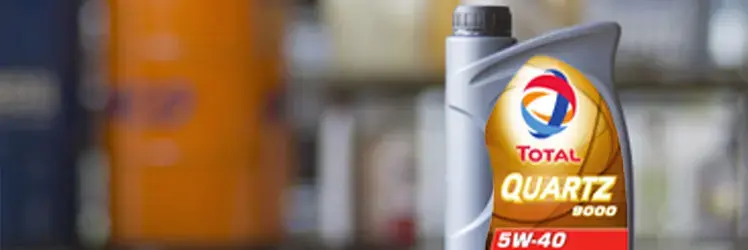
DECODING THE LABELS OF LUBRICANTS’PACKAGINGS
Lubricant containers can be a bewildering source of information — numbers, letters, seals and more make them clear as mud. Here at Total we’re going to help you figure them out.
So, you can whiz your way through War and Peace, but can’t understand a single word of what appears on a container or can of engine oil? That's only because you aren't familiar with the concepts — yet. But here at Total we know a lot about oils and lubricants. Let us give you the lowdown.
Manufacturers use acronyms, numbers and even seals on their labels to convey information to their customers.
The Front Label
The first things you see on the front are the manufacturer's logo and the product name. There's also a code and references to the type of lubricant contained inside, i.e. mineral or synthetic.
The code (for example, 5W-40) refers to the oil’s SAE classification, or viscosity. This is the most important piece of information, because it is also given in the owner's manual. The carmaker specifies the properties of the oil that should be used in the engine in the manual. That's why it's a good idea to always choose good quality oil that has the same properties as the one recommended by the maker.
The Back Label
More information is provided on the label on the back of the container.
- Specifications: This gives the product’s approvals or levels. An approval indicates that the product complies with the requirements established by the carmaker and has been approved for use by it. If the lubricant passes all the trials and tests required for that particular make of car, the carmaker issues a letter stating that the oil meets all the engine’s requirements. However, if you see the word “level,” this means that the product has not obtained carmaker approval and it's the oil manufacturer recommending that it be used for the make of car.
- Recommendations for use: This section provides instructions on how the oil should be used, how often this should be changed, types of engines, etc. In some cases it also includes safety information.
- Logos: There are some seals at the bottom of the label. One of these indicates the container’s capacity and guarantees the amount of oil inside. Another indicates that the container is recyclable and a third, that the oil manufacturer is a member of an organization for end-of-life recycling.
- Additional Information: Total’s containers also include our website address, where you can find more information about the product and the company. Lastly, you will find the product’s bar code.
But which information is the most important when deciding which engine oil to purchase? Well, that would be the product’s viscosity (SAE) and specifications. They tell you whether lubricant is the right one for your vehicle; all you have to do is compare the information with the indications provided in the owner's manual.
For example, if a container is marked SAE 5W-40 and the relevant PSA standard, for example Quartz 9000 5W-40, the product can be used for Citroën and Peugeot diesel cars without particulate filters (DPF). The labels also indicate whether the container is recyclable and whether the waste oil can be disposed of at recycling points (consumers) or picked up by waste oil collection professionals in the event the manufacturer is a member of an end-of-life recycling organization (auto repair shops).
Don’t forget to always choose products of proven quality that are appropriate for your car engine to ensure it continues to perform as well as the day it first rolled off the line.